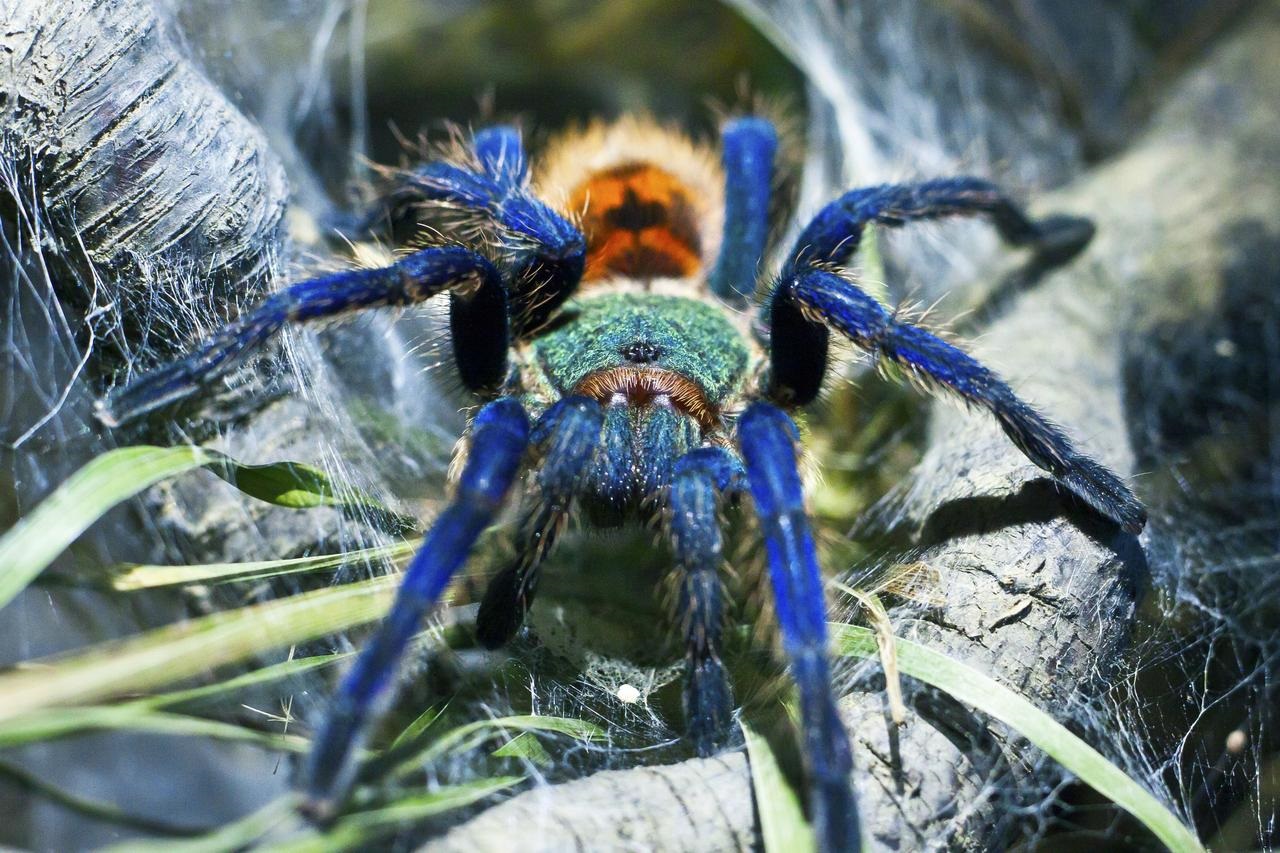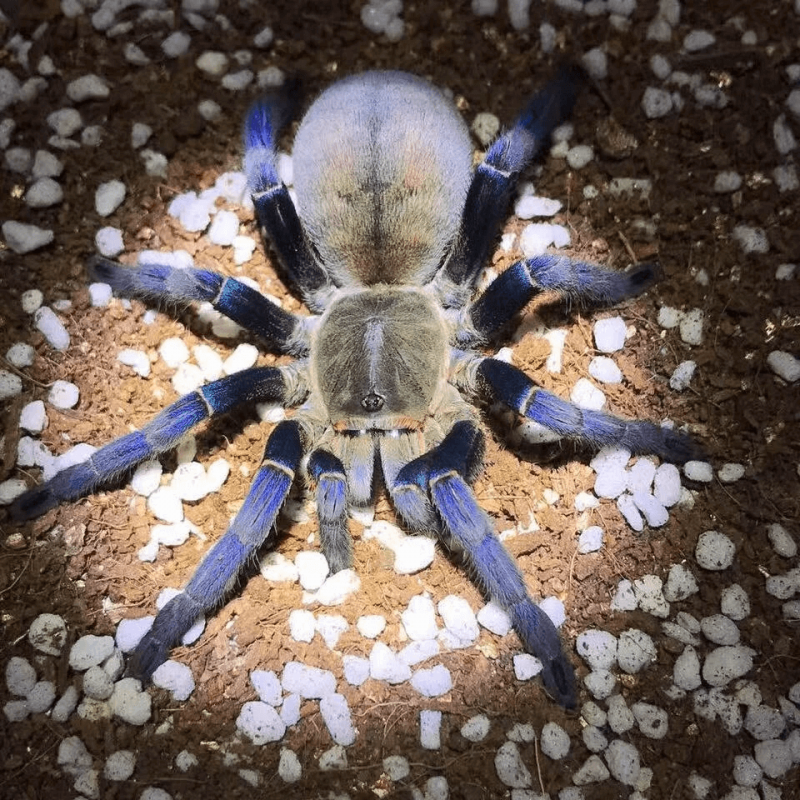


Some tree bark and fake plants should also be placed in the enclosure to allow for security for your spider. Your Cobalt Blue will spend most of its time below the substrate and will venture out at night, if it detects any movement it will then scurry back down into the safety of its burrow.Ī red light can be used at night time, as this light cannot be detected by spiders, which will allow you to see your Cobalt Blue outside its burrow at night. The length and width of the tank will need to be at the very least 3 times the length of the spider. Humidity should be maintained at around 60 – 70% and this can be done by spraying a corner of the enclosure a few times a week. The vermiculite will also allow the substrate to hold slight moisture well and help maintain the necessary humidity levels. This should allow for extensive excavating and elaborate tunnel making below ground, which the Cobalt Blue loves to do. An ideal substrate is a 50:50 mix of peat moss and vermiculite. Your substrate should be around 20 – 25cm deep for these fossorial spiders. A glass enclosure works best as it allows you to easily see inside the enclosure without having to open the lid and disturb your spider. When it comes to housing the Cobalt Blue Tarantula, depth of substrate is more important than floor space or height.

Interfere with your Cobalt Blue as little at you need to, as this will be the best for this species and for your safety. That being said, if they have a burrow they will rather retreat than fight. They might seem shy and calm until they are cornered, when they can practically teleport to deliver a bite. Most common symptoms described have been sharp pain followed by localized numbness and aching joints. They have being known to deliver multiple bites and their venom can cause medically significant symptoms. This means that their first line of defence is to bite, and they are quick to adopt a threat pose. Being an Old World tarantula this species lacks the urticating hairs found on the New World species.


 0 kommentar(er)
0 kommentar(er)
